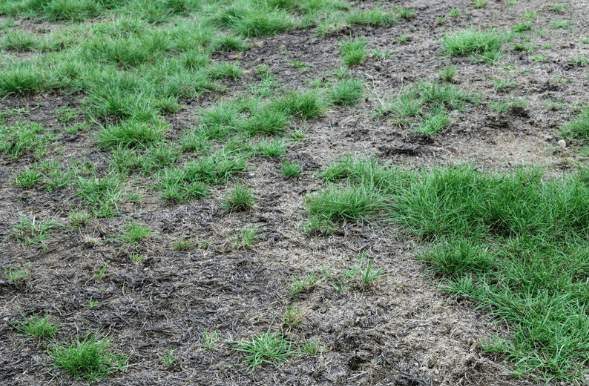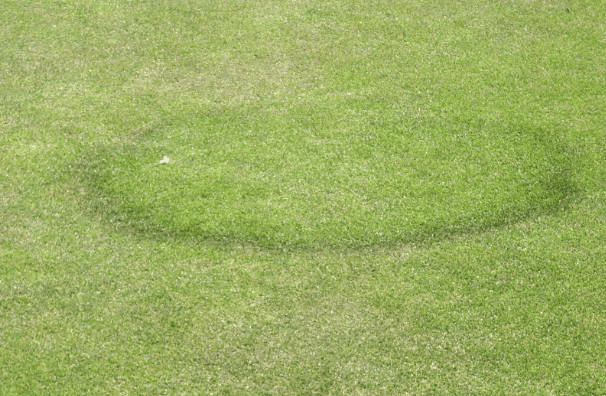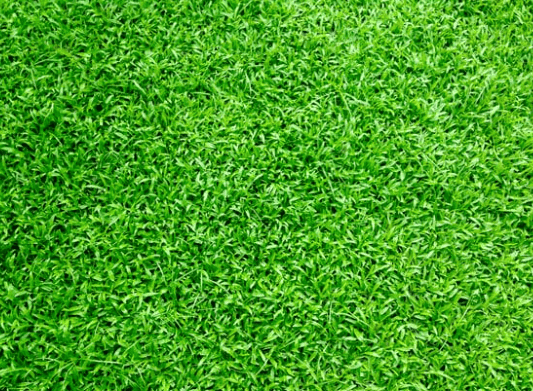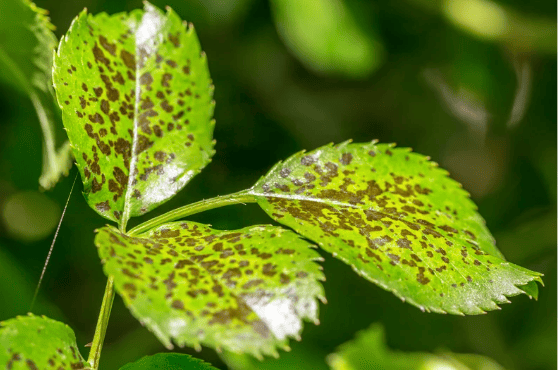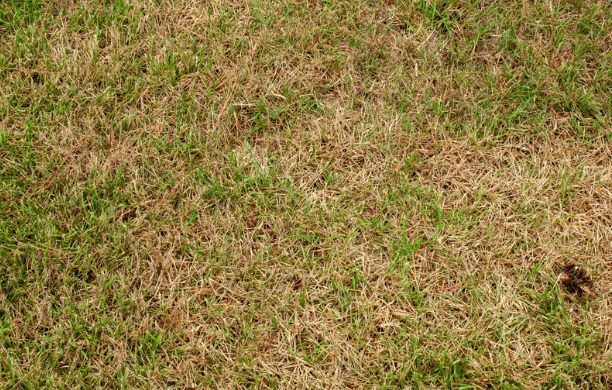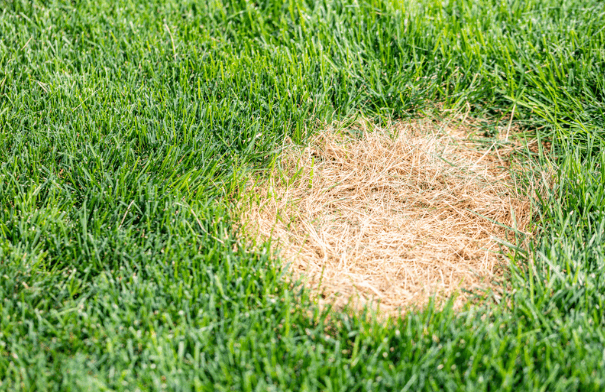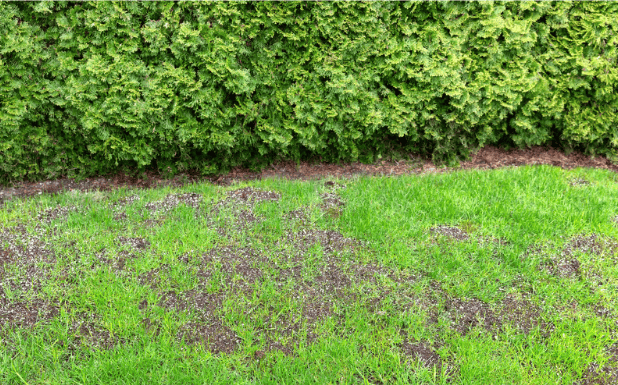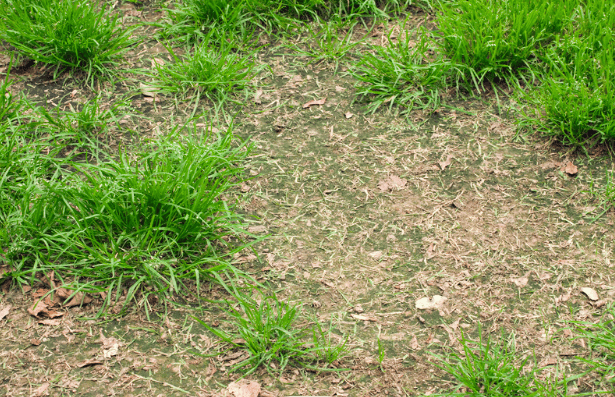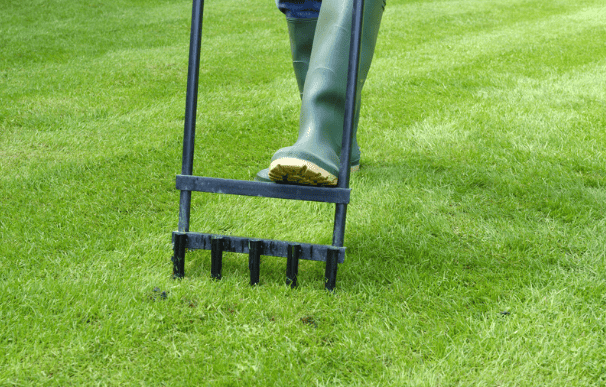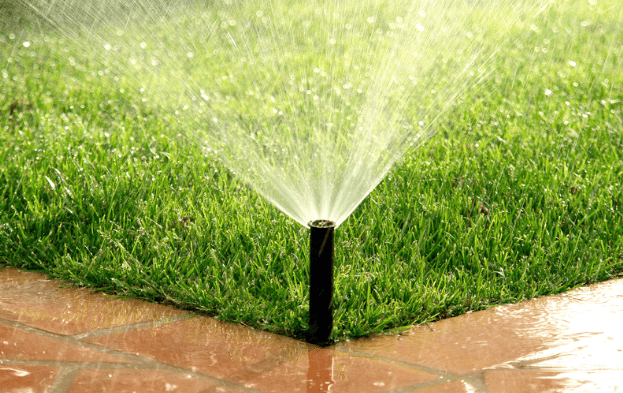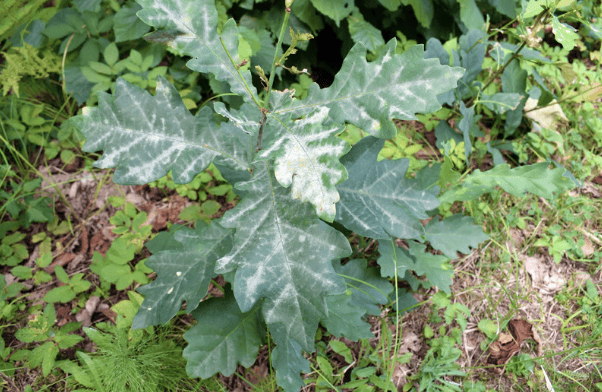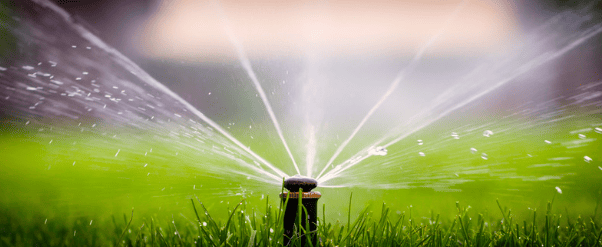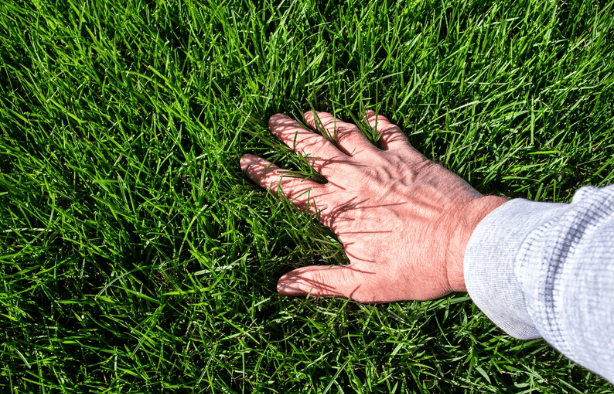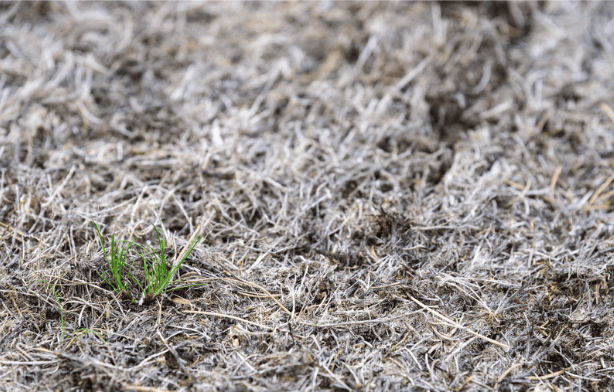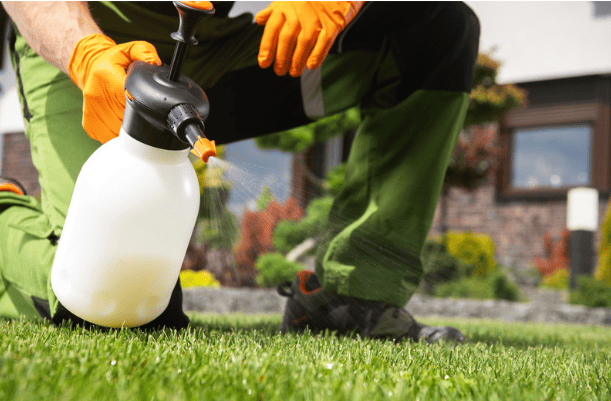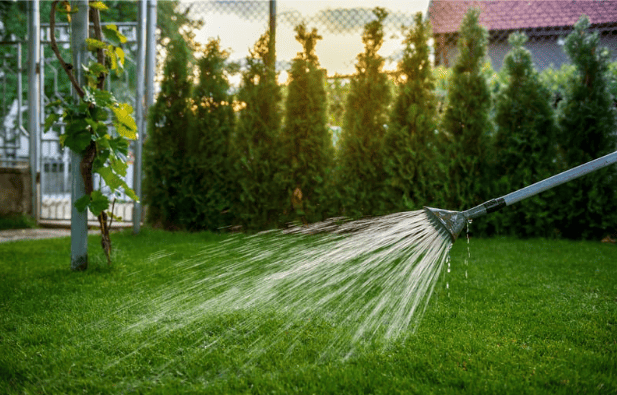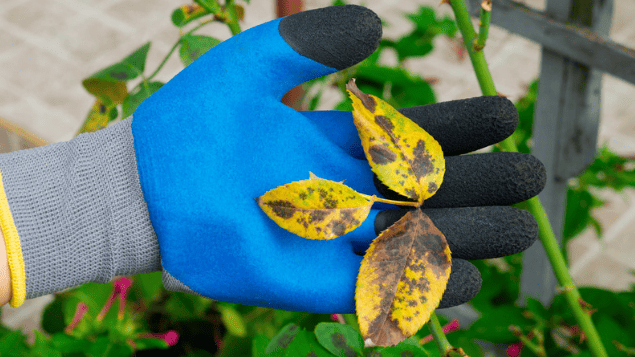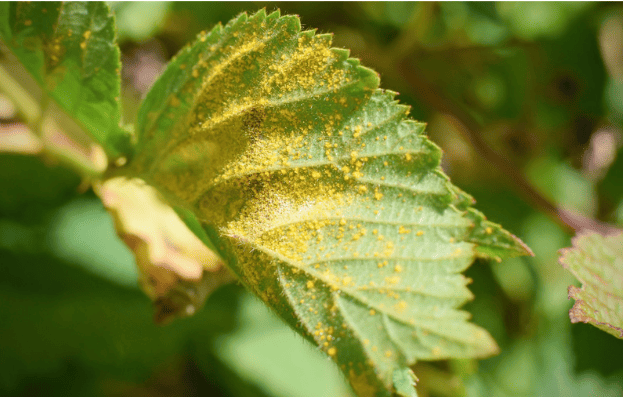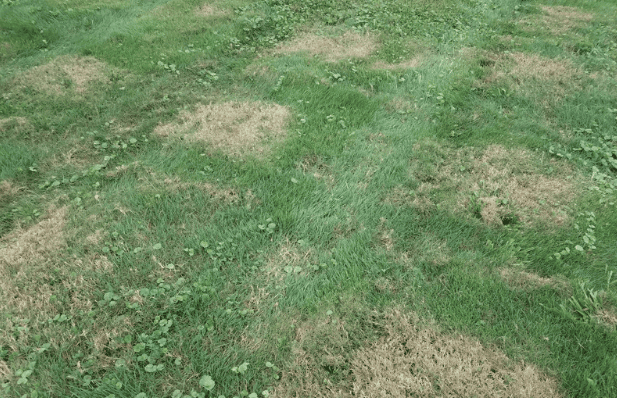Common Lawn Diseases
Common Lawn Diseases and How to Treat Them
Many homeowners take pride in maintaining a lush, green lawn, but achieving this ideal can be challenging due to various common lawn diseases that affect the health and appearance of turf.
Among the most prevalent are snow mold, fungal lawn diseases, and other turf diseases. Snow mold often appears as pink snow mold or gray snow mold on your lawn during the winter and early spring when snow cover lingers.
To manage snow mold, ensure proper lawn aeration, avoid heavy fertilization before winter, and consider fungicide applications if needed. Fungal lawn diseases, such as dollar spot, brown patch, and rust, can cause discolored patches and a decline in grass health.
Other turf diseases, including leaf spot and powdery mildew, require maintaining good lawn hygiene, avoiding excessive watering, and using disease-resistant grass varieties.
Identifying specific lawn problems and addressing them promptly is crucial for effective management. By employing integrated pest management practices and consulting with lawn care professionals if necessary, you can keep your lawn healthy and vibrant throughout the year.
Introduction to Lawn Disease
A healthy lawn requires more than regular mowing and watering. Lawn diseases can attack your grass and cause significant damage if not addressed promptly. Understanding these grass diseases, including common ones like snow mold and other fungal diseases, their symptoms, and treatment options, helps you maintain a beautiful and vibrant lawn year-round.
Lawn diseases can be broadly categorized into fungal disease, bacterial infections, and environmental issues. Fungal lawn disease are the most common and are often caused by factors such as compacted soil, high humidity, and inadequate lawn care practices.
Snow mold, for instance, is a prevalent fungal disease that appears as pink snow mold or gray snow mold on the lawn, usually in late winter or early spring.
Identifying lawn disease early, including symptoms of other fungal diseases, is crucial for preventing extensive damage. Knowing how to identify lawn diseases helps recognize issues like snow mold and other fungal infections before they escalate.
Prompt application of appropriate treatments, such as fungicides and improving lawn care practices, can save your lawn from severe harm and ensure it remains healthy and attractive.
Brown Patch
Symptoms:
Brown Patch, caused by the Rhizoctonia solani fungus, appears as large, irregularly shaped brown patches on your lawn.
These brown patches can vary from a few inches to several feet in diameter and are often bordered by a darker, reddish brown border. The disease primarily affects warm season grasses under humid conditions.
Treatment:
Improving Drainage: Enhance lawn drainage to prevent excess moisture, which fosters fungal growth. Improve soil aeration and reduce watering frequency during wet weather to combat poor drainage.
Fungicides: Use a broad-spectrum fungicide specifically targeting Rhizoctonia solani. Follow the manufacturer’s guidelines meticulously for effective results.
Proper Mowing: Maintain an appropriate mowing height to avoid stressing the turf. Cutting grass too short can make it more vulnerable to fungal disease.
Prevention:
Watering Practices: Water your lawn early in the day to ensure grass blades dry before evening. Avoid excessive watering, as prolonged wet conditions favor fungal growth.
Aeration: Regularly aerate your lawn to reduce soil compaction and enhance water infiltration. Proper aeration helps to diminish moisture retention and improve overall lawn health.
Additional Tips:
Soil Testing: Conduct regular soil tests to ensure balanced pH and nutrient levels. Poor soil conditions can worsen disease issues.
Lawn Renovation: In cases of severe infection, consider overseeding with disease-resistant grass varieties or renovating affected areas to restore lawn health.
Dollar Spot
Symptoms:
Dollar Spot is identified by small, round patches of bleached or straw-colored grass, roughly the size of a silver dollar.
These spots typically develop during drought stress and low nitrogen levels, thriving in hot, humid conditions. The disease commonly affects cool season grasses.
Treatment:
Fertilization: Apply a nitrogen-rich fertilizer to boost grass health and promote vigorous growth. Adequate fertilization helps the grass recover faster and mitigates the disease’s impact.
Fungicides: Use fungicides specifically designed for Dollar Spot control. Opt for products that are effective against the pathogen and follow the label directions carefully for the best results.
Proper Irrigation: Water deeply and infrequently to minimize stress on the grass. Shallow watering encourages shallow root systems, making the lawn more susceptible to disease.
Prevention:
Regular Fertilization: Maintain a balanced fertilization schedule to ensure sufficient nutrient levels. Proper fertilization enhances grass strength and resistance to diseases.
Thatch Management: Aerate or dethatch to manage thatch buildup. Excessive thatch can trap moisture, creating a favorable environment for fungal growth.
Additional Tips:
Mowing Practices: Mow the lawn regularly to keep it at an optimal height and reduce stress on the grass. Avoid mowing when the grass is wet to prevent damage.
Cultural Practices: Follow proper lawn care practices, including avoiding excessive watering and choosing appropriate grass varieties for your region.
By addressing these lawn disease issues with proper irrigation practices, you can effectively manage and prevent Dollar Spot and other fungal diseases affecting your lawn grasses.
Powdery Mildew
Symptoms:
Powdery Mildew appears as a white, powdery coating on grass blades. This disease typically occurs in shady areas with poor air circulation and high humidity.
It is more common in cool season grasses and can cause the grasses to turn yellow and weaken.
Treatment:
Improving Airflow: Trim overhanging branches and reduce shade to increase sunlight and airflow. Improved airflow helps reduce humidity around the grass and slows disease progression.
Fungicides: Apply fungicides designed to treat powdery mildew. Choose products that are effective against the specific fungal strain and follow application instructions.
Proper Watering: Water at the base of plants to avoid wetting the foliage. Wetting the leaves can exacerbate the disease.
Prevention:
Regular Pruning: Prune trees and shrubs regularly to enhance sunlight penetration and reduce shade. This helps improve air circulation and reduce the risk of powdery Mildew.
Avoid Overcrowding: Space plants appropriately to allow for adequate airflow. Avoid planting grass too densely, as this can create a humid microenvironment conducive to disease.
Additional Tips:
Plant Selection: Choose grass varieties that are resistant to powdery mildew and other common diseases in your area.
Lawn Care Practices: To promote healthy grass growth, follow proper lawn care practices, including regular mowing and fertilization.
Rust Diseases
Symptoms:
Rust diseases cause orange, yellow, or reddish-brown pustules on the grass blades and leaf blades. These bumps can eventually lead to the browning and thinning of the turf.
Rust diseases are more common in cool season grasses and can cause the grass to weaken and turn yellow.
Treatment:
Fertilization: Apply a balanced fertilizer to support healthy grass growth. Adequate nutrition helps the grass recover from rust diseases and improves its overall health.
Fungicides: Use fungicides that are effective against rust pathogens and other fungal diseases. For the best results, apply the fungicide according to the manufacturer’s recommendations.
Mowing: Regularly mow the lawn to prevent the build-up of infected grass. Frequent mowing helps remove rust-infected leaves and reduces disease spread.
Prevention:
Regular Aeration: Aerate the lawn to improve soil conditions and reduce rust development. Aeration helps reduce soil compaction and enhances water infiltration.
Proper Watering: Water early in the day to reduce humidity and promote drying. Avoid watering in the evening, as this can create a damp environment that encourages rust development.
Additional Tips:
Cultural Practices: Implement cultural practices such as proper mowing and fertilization to reduce the risk of rust diseases. Maintain a balanced lawn care routine to promote healthy grass.
Grass Selection: Choose rust-resistant grass varieties and consider incorporating diverse grass species to reduce disease risk.
Leaf Spot
Symptoms:
Leaf Spot disease presents as small, dark brown to black spots on the leaf blades, which may have a yellow halo.
It can cause significant thinning of the grass over time and is more common in cool season grasses.
Treatment:
Fungicides: To manage leaf spot infections, apply targeted fungicides. Choose products that are effective against the specific fungal pathogen causing the disease.
Improving Drainage: Ensure proper drainage to reduce the moisture that supports fungal growth. Avoid excessive watering and improve soil aeration.
Watering Practices: Water deeply but infrequently to reduce leaf wetness. Shallow, frequent watering can encourage fungal growth and exacerbate the disease.
Prevention:
Proper Mowing: Avoid mowing when the grass is wet to prevent the spreading of the disease. Mow the lawn regularly to maintain optimal grass height and reduce disease risk.
Fertilization: Keep the lawn well-fed with a balanced fertilizer to enhance its resistance to diseases. Proper nutrition helps strengthen the grass and improves its ability to recover.
Additional Tips:
Thatch Management: Reduce thatch buildup through aeration or dethatching. Excessive thatch can trap moisture and create an ideal environment for fungal growth.
Lawn Care Practices: Follow good lawn care practices, including regular mowing, fertilization, and irrigation, to promote healthy grass growth and reduce disease risk.
Take-All Patch
Symptoms:
Take-All Patch causes circular patches of dying grass, often with a yellow to brown color. It commonly appears in the early summer and can spread rapidly.
The disease affects both cool season grasses and warm season grasses.
Treatment:
Fungicides: Use fungicides specifically designed to combat Take-All Patch. Apply the fungicide according to the label directions and follow the recommended application rates.
Improving Soil pH: Adjust soil pH to ensure it is within the optimal range for grass growth. Soil testing can help determine the appropriate pH adjustments.
Proper Fertilization: Apply a balanced fertilizer to strengthen grass and enhance its resistance to the disease. Proper nutrition supports healthy grass growth and recovery.
Prevention:
Regular Soil Testing: Test soil regularly to maintain appropriate pH and nutrient levels. Soil testing helps identify imbalances and allows for corrective measures.
Cultural Practices: Implement cultural practices such as proper irrigation and mowing techniques to reduce disease development. Avoid practices that stress the grass and make it more susceptible to disease.
Additional Tips:
Grass Selection: Choose disease-resistant grass varieties and consider using a mix of grasses to reduce disease risk. Some grass species are more resistant to Take-All Patch than others.
Lawn Maintenance: Maintain a regular lawn care routine, including proper mowing, fertilization, and irrigation, to support healthy grass growth and reduce disease risk.
Snow Mold
Symptoms:
Snow Mold Lawn Disease appears as gray snow mold or pink snow mold on grass blades, often following winter snow cover.
It can lead to patchy, dead areas in the lawn. Snow Mold lawn disease is more common in cool season grass and typically occurs in areas with heavy snow cover.
Treatment:
Raking: Rake affected areas to remove mold and improve airflow. This helps reduce moisture levels and promotes grass recovery.
Fungicides: Apply fungicides if necessary, according to label directions. Choose products that are effective against snow mold pathogens.
Improving Drainage: Ensure proper drainage to reduce moisture retention. Improving soil drainage can help prevent the development of Snow Mold.
Prevention:
Proper Snow Removal: Remove excess snow from the lawn to prevent mold development. Avoid piling snow on the grass and ensure proper snow management.
Aeration: Regularly aerate the lawn to improve soil conditions and reduce mold risk. Aeration helps enhance water infiltration and reduce moisture retention.
Additional Tips:
Lawn Care Practices: Follow good lawn care practices, including proper mowing, fertilization, and irrigation, to support healthy grass growth and reduce disease risk.
Plant Selection: Choose grass varieties that are resistant to Snow Mold and consider using a mix of grasses to reduce disease risk.
Conclusion
Lawn diseases can be a significant challenge for homeowners, but with the right knowledge and proactive care, you can keep your lawn healthy and vibrant.
By understanding the symptoms of common lawn diseases and implementing effective treatment and prevention strategies, you can maintain a beautiful and resilient lawn.
Regular monitoring, proper maintenance, and timely intervention are key to preventing and managing grass diseases.
If you encounter persistent issues or need expert assistance, don’t hesitate to contact ABC Home and Commercial for professional lawn care services and advice.
